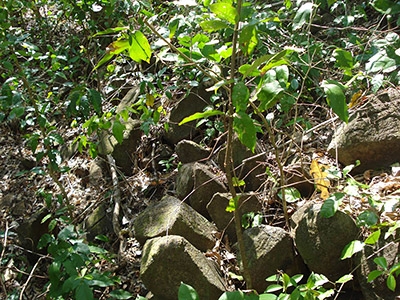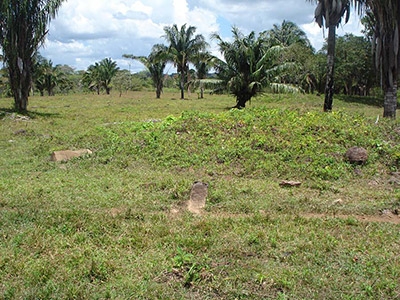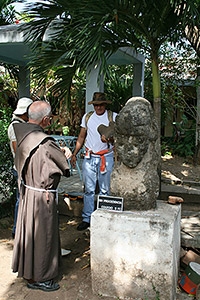Research project
Fixing history: Ancient cultural practices of stone sculpture in central Nicaragua
For three millennia, carved sculptures were ubiquitous among ancient peoples in the Americas. Sculpted in stone, metal or wood, they developed into the well-known totem poles, colossal Olmec heads, royal Maya stelae and golden Inca statues.
- Contact
- Alexander Geurds
- Funding
-
 NWO Talent Scheme (VENI)
NWO Talent Scheme (VENI)

Today, they remain central to local museum collections and cultural heritage management as iconic hallmarks of ancient American material culture. However, archaeological understanding has remained limited to stylistic comparison of individual sculptures, mainly due to the poorly documented archaeological contexts. This study instead draws on emerging approaches in archaeology to question what people in practice did with such large monoliths and how these stones related to people’s cultural identity.
This practice oriented approach is well-suited to incorporate the study of:
- The technology require in procuring (Figure 1), fashioning, and placing these large sculptures; and
- Improve understanding of the materiality of these sculptures as a mode to create, fix, or alter community identity.

This NWO Talent Scheme (VENI) funded research targets the following question regarding pre-Columbian cultural practices in Nicaragua: How did practices of stone sculpture shape cultural histories? The raised sub-questions are: How were raw materials converted into stone sculptures? How were these immobile sculptures inserted in monumental settings? Who are the individuals depicted on them (Figure 2)? How did stone sculpture producers negotiate cultural identities.

The research is enabled and necessitated due to an unprecedented discovery Dr. Alexander Geurds made in Nicaragua in 2009, namely a unique complex of stone human sculptures linked to monumental architecture, including pyramid mounds and ceremonial open spaces (Figure 3). As the first contextual analysis of pre-Hispanic sculpture in Central America, this study uses archaeometric analyses to reveal the understudied technology of sculpture production. It examines the relations between sculptural placement, monumental architectural context and its wider landscape. It will study how people engaged with stone sculpture and how these monumental objects in turn shaped cultural identities (Figure 4).

